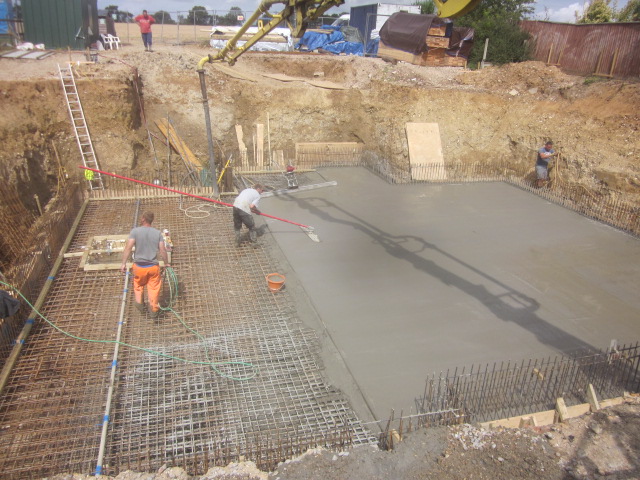Benefits of Waterproof Concrete.
|
Waterproof concrete does not let water in or out:
-
Water cannot get through. Depending on the exact concrete mix it might be that no vapour could get through, but there isn't a test for vapour that I know of.
-
Waterproof concrete cannot dry out over time - the major cause of cracking in old concrete. So waterproof concrete should never crack.
-
Most chemicals that are deliterious to concrete, such as sulfates, salt and oxygen, need to be dissolved in water to do harm. Since the water cannot get in neither can the deliterious chemicals.
-
In basement construction waterproof concrete meets the requirement in BS8102 that the first defence against ingress of water should substantially reduce the amount of water that internal drainage (if chosen) has to deal with.
But waterproof concrete is not resistant to the salt in sea water, which attacks the concrete crystals that bind the aggregate. If you want concrete for sea defences you need to include a chemical that the sea water doesn't attack. This might be GGBS which should still be waterproof.
Most people think that a waterproof concrete STRUCTURE should not leak. The concrete should not have leaks through voids, cracks or debris even if the concrete is otherwise sound.
The Concrete Society report referenced on the home page quotes as follows (at 7.1.1.):
"
In its introduction to the selection of materials the publication Concrete Basements Guidance on the design and construction of in-situ concrete basement structures to the Eurocodes (The Concrete Centre, 2012) states:
"Good concrete is inherently water resistant".
It then goes on to say;
"Before considering selection of materials, it is worth emphasising the fundamental requirements for achieving such performance. These are:
- correct structural design
-
appropriate concrete mix
-
good workmanship in construction
-
appropriate supervision.
Many water-resistant basements have been successfully constructed on the basis of the
above alone. There are a number of admixtures in the market to modify the properties
of the fresh and hardened concrete (e.g. porosity, permeability). Such measures should
not be necessary if the basic principles noted above are observed".
"
|
The crew in this photo might seem a motley lot but let us look carefully.
-
Lots of reinforcing steel, evenly spaced, neatly tied, clean beneath - correct structural design
-
A very dense and cohesive concrete obviously not over watered - appropriate concrete mix
-
a concrete pump to place the concrete where it needs to be, air driven poker as well as vibrating screed bar, hose pipe being deployed to spray water to cure the surface properly. The air compressor will be used with a pole scabbler to scabble the wall joint concrete before the wall formwork goes up - good workmanship in construction
-
and on the top looking down - appropriate supervision

Neither are they forming kickers, the timber is for a drainage channel around the inside.
So, waterproof concrete is a good concrete fit for purpose AND good workmanship. Not just one or the other.
|
|
|
|
|
|
Please note. The author acknowledges all the trademarks it mentions on this site.
|
|
|
|